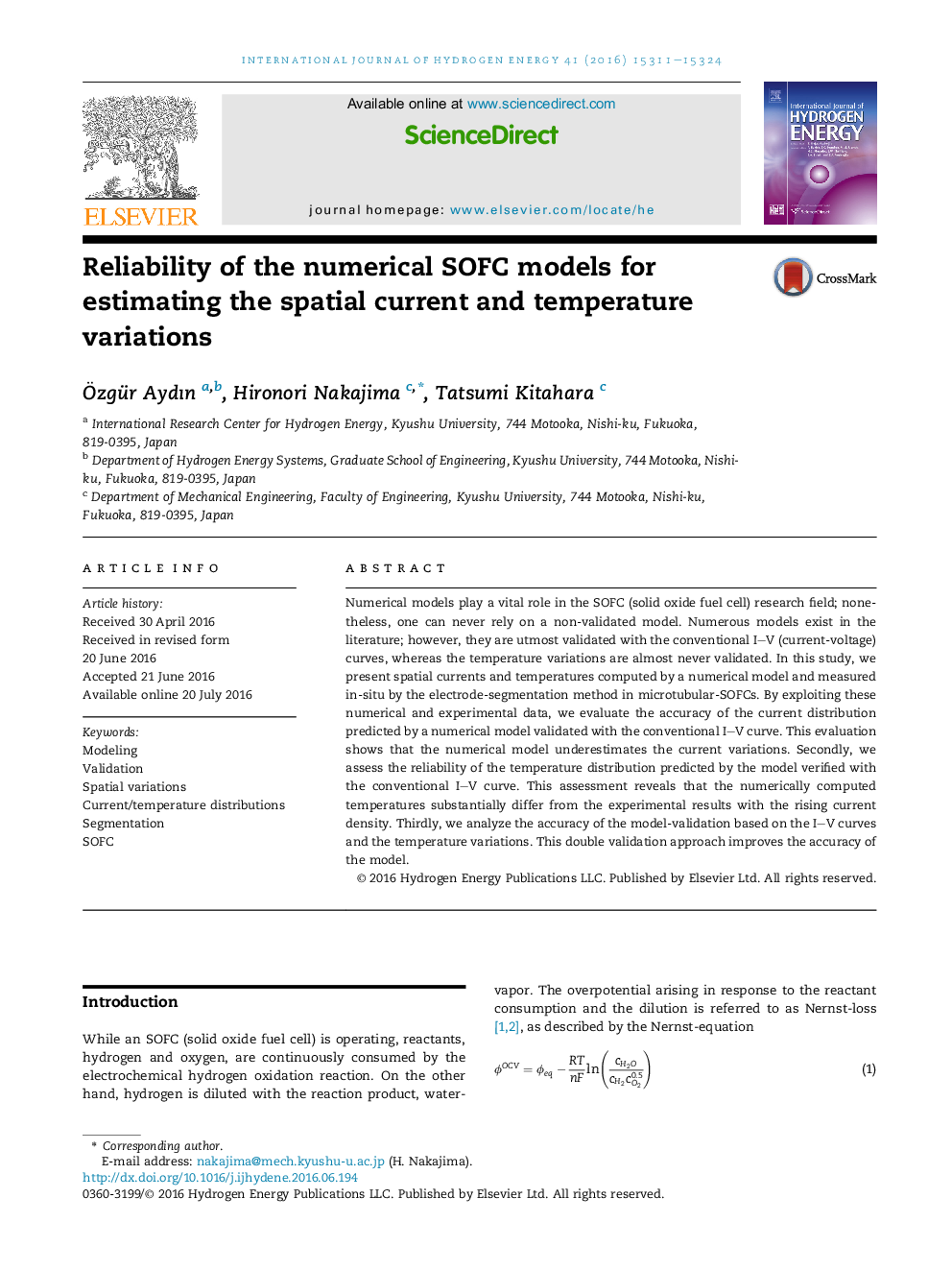| Article ID | Journal | Published Year | Pages | File Type |
|---|---|---|---|---|
| 1270410 | International Journal of Hydrogen Energy | 2016 | 14 Pages |
•Reliability of numerical SOFC models for predicting spatial variations.•In-situ acquired spatial current and temperature variations.•Underestimated current variations by model validated with conventional IV curve.•Remarkable impact on temperature distributions from radiant heat transfer.•Improved accuracy with double validation by IV curve and temperature distributions.
Numerical models play a vital role in the SOFC (solid oxide fuel cell) research field; nonetheless, one can never rely on a non-validated model. Numerous models exist in the literature; however, they are utmost validated with the conventional IV (current-voltage) curves, whereas the temperature variations are almost never validated. In this study, we present spatial currents and temperatures computed by a numerical model and measured in-situ by the electrode-segmentation method in microtubular-SOFCs. By exploiting these numerical and experimental data, we evaluate the accuracy of the current distribution predicted by a numerical model validated with the conventional IV curve. This evaluation shows that the numerical model underestimates the current variations. Secondly, we assess the reliability of the temperature distribution predicted by the model verified with the conventional IV curve. This assessment reveals that the numerically computed temperatures substantially differ from the experimental results with the rising current density. Thirdly, we analyze the accuracy of the model-validation based on the IV curves and the temperature variations. This double validation approach improves the accuracy of the model.
